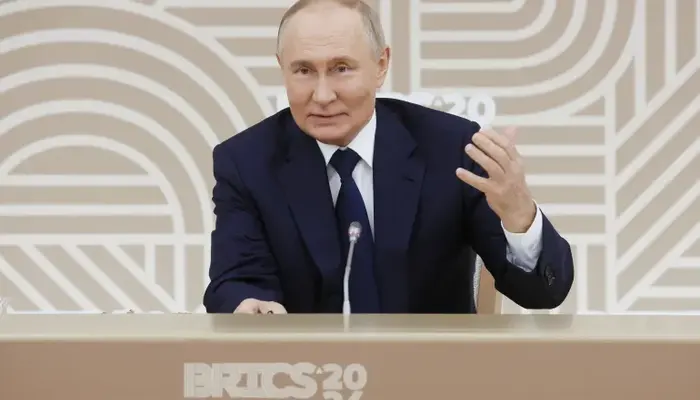Russian President Vladimir Putin initiated a new exercise of Russia’s nuclear forces on Tuesday, marking the second drill in just two weeks as the conflict in Ukraine intensifies. Russian officials have indicated that the war, now in its 2-1/2-year phase, is entering its most perilous period yet, particularly as Russian troops advance in eastern Ukraine and Western nations consider further support for Ukraine.
Moscow has been signaling to the West for weeks that it will respond decisively if the U.S. and its allies provide Ukraine with longer-range missiles capable of striking deep into Russian territory. The NATO alliance has also reported that North Korean troops have been deployed to western Russia, adding another layer of complexity to the ongoing crisis.
In a video announcement about the drill, Putin emphasized the importance of readiness in nuclear capabilities. “We will work out the actions of officials to control the use of nuclear weapons with practical launches of ballistic and cruise missiles,” he stated. Although he described the use of nuclear weapons as an “extremely exceptional measure,” he insisted that preparations must be maintained.
Putin reiterated Russia’s commitment to enhancing its nuclear arsenal. “We will continue to improve all their components. The resources for this are available,” he said. He stressed that Russia does not aim to enter a new arms race but will keep its nuclear forces at a level of “necessary sufficiency.”
This recent drill follows an exercise conducted on October 18 in the Tver region, northwest of Moscow, which involved a unit equipped with Yars intercontinental ballistic missiles, capable of targeting U.S. cities. Last month, Putin also approved changes to Russia’s nuclear doctrine, stipulating that any assault against Russia supported by a nuclear power would be considered a joint attack. This move serves as a direct warning to the U.S. against aiding Ukraine with conventional weaponry.
Rising Geopolitical Tensions
As the world’s largest nuclear power, Russia and the U.S. together control approximately 88% of the globe’s nuclear warheads. U.S. officials, however, have noted no changes to Russia’s nuclear posture since the onset of the war.
In 2022, concerns about the potential use of tactical nuclear weapons led U.S. officials to warn Putin of severe consequences should he pursue that path, according to CIA Director Bill Burns.
Both Putin and U.S. President Joe Biden have framed the other as an aggressive force in the conflict. Trump, the Republican presidential candidate, has also voiced concerns about the possibility of nuclear war.
“Given the growing geopolitical tensions and the emergence of new external threats and risks, it is important to have modern and constantly ready-to-use strategic forces,” Putin remarked. He also mentioned that Russia is transitioning to new “stationary and mobile-based missile systems” designed for reduced launch preparation times, aiming to circumvent missile defense systems.
As North Korea’s involvement in the conflict grows, the Pentagon stated on Monday that it would not impose new restrictions on Ukraine’s use of American weapons. This decision came in response to reports of North Korean military units being deployed to the Kursk region in Russia, underscoring the escalating global stakes of the conflict.
As these developments unfold, the situation remains fluid, with the potential for further escalation posing significant risks not only to Ukraine but to international security as a whole.
Follow us on Google News, Instagram, YouTube, Facebook,Whats App, and TikTok for latest updates
